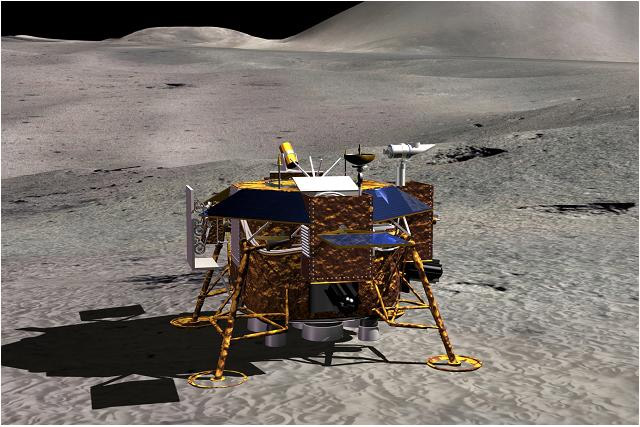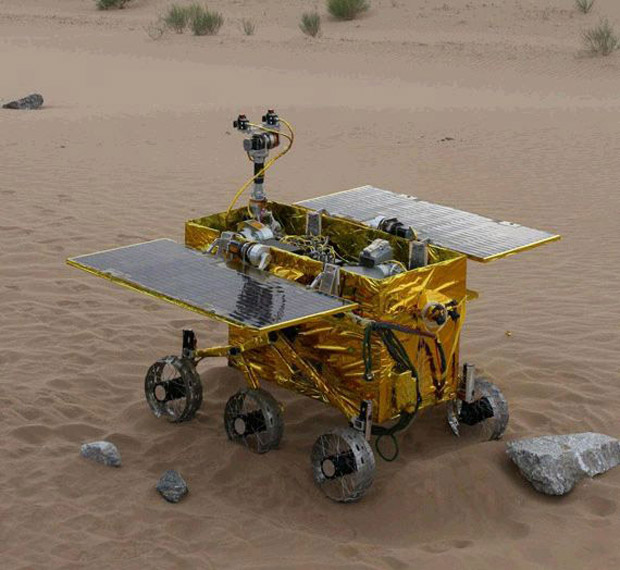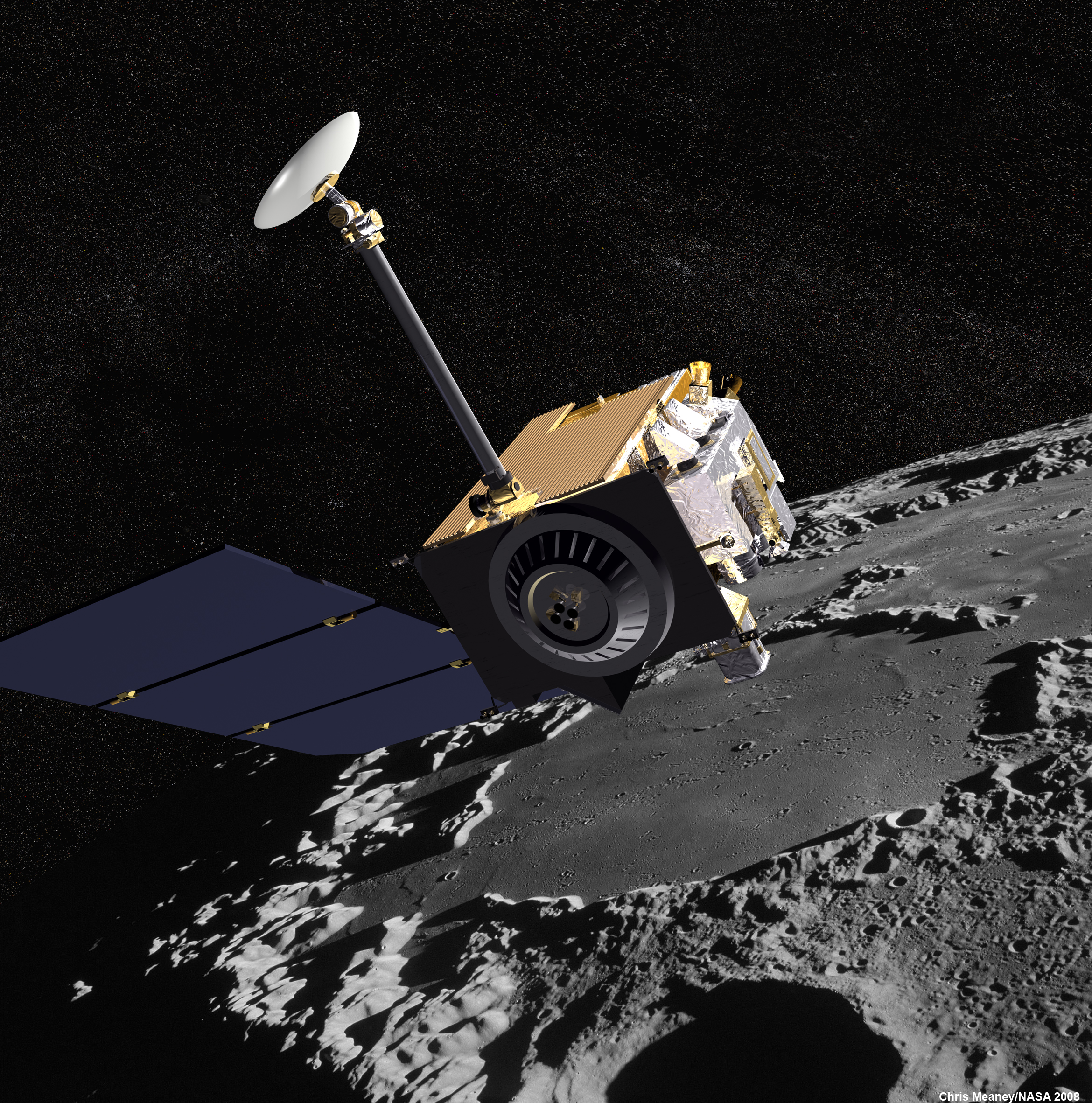
China Readying 1st Moon Rover for Launch This Year

As three Chinese astronauts zip around the Earth aboard a prototype space station, the country is gearing up to launch its first moon rover in the coming months.
China's robotic Chang'e 3 mission, reportedly slated to blast off toward the end of 2013, marks a big step forward in the nation's lunar exploration program. Chang'e 3 will become China's first craft to attempt a soft landing and rover deployment on the surface of the moon.
China’s multi-phase moon venture began with the orbiters Chang'e 1 and Chang'e 2, which launched in 2007 and 2010, respectively. Now Chinese space program officials are ready to shift to phase two. [Gallery: Moon Photos by Chang'e 2 Probe]
Meanwhile, the nation's manned spaceflight program continues to move forward. Three "taikonauts" arrived at China's Tiangong 1 space module on June 13, beginning a 12-day stint aboard the orbiting laboratory.
The three crewmembers are slated to spend a total of 15 days in orbit, which would make their Shenzhou 10 mission the longest manned spaceflight in China's history.

Final testing
Last month, media outlets in China reported that final testing has begun on the Chang'e 3 probe (which, like the other Chang'e spacecraft, takes its name from the nation's mythical moon goddess).
Breaking space news, the latest updates on rocket launches, skywatching events and more!
According to a statement from the China National Space Administration, the nation carried out a 40-day ground test to mimic the lunar environment, in an attempt to make sure that Chang’e 3 can endure the extreme temperatures on the moon.
As noted by Dragon in Space, a website that monitors China's space program, the Chang'e 3 lunar probe consists of two main parts: a service module and a lunar landing vehicle. Dragon in Space reports the mission will be launched this December. The probe would land softly on the moon’s surface and deploy a six-wheeled rover to explore the areas surrounding the landing spot.
Previously, high-definition images of the preferred landing spot — called Sinus Iridum — were snapped by the Chang'e 2 lunar orbiter. Other touchdown locales are reportedly being considered.
The Chang'e 4 spacecraft also incorporates a robotic lander and rover, built as a backup to Chang'e 3.
Watching from above
Ready to watch the Chinese moon landing and rover action from above is NASA's Lunar Reconnaissance Orbiter (LRO). [Latest Moon Photos from LRO]
"It is gratifying to finally see an exploration vehicle landing on the moon," said Mark Robinson of Arizona State University, the principal investigator for the high-powered Lunar Reconnaissance Orbiter Camera. "It has been 40 years since [the Soviet Union's] Lunokhod 2. And there is much to see and do."
"It will certainly be fun to watch their progress from 100 kilometers above. The moon is a complicated and mysterious world," Robinson told SPACE.com.
"With the new LRO data we can now map out and plan — at the meter scale — dozens of exploration traverses to answer key science questions and uncover resources," he added. "Perhaps soon NASA will also have vehicles exploring the surface of the moon? The moon is the first step in our journey as humans leave the Earth."

Hauling back the goods
Looking further into the future, China's step-by-step robotic moon effort also includes a return to Earth of lunar surface materials.
Chang'e 5 is on the books as a lunar sample-return mission, rocketing back to Earth specimens of the moon before 2020 in phase three of China's moon exploration program.
Earlier this year, the state-run newspaper China Daily reported that an experimental spacecraft will be launched before 2015 to conduct vital re-entry tests on a capsule design to be used in the Chang'e 5 mission.
That capsule would haul back the goods from the moon, plunging through Earth's atmosphere at a projected speed of about 25,000 mph (40,230 km/h). To date, no Chinese spacecraft has ever re-entered at that velocity. Moreover, no simulation using ground-test facilities can recreate that blistering heat, China Daily noted.
Relay approach
Citing Hu Hao, chief designer of the lunar exploration program's third phase and a deputy to the National People's Congress (NPC), China Daily said the re-entry test of a return capsule would make use of the Chang'e-2 lunar orbiter base structure.
"Scientists believe we need to launch the spacecraft to prove that our current technical plan can actually bring Chang'e 5 home safely," Hu told China Daily during the NPC annual session.
According to Hu, the Chang'e 5 mission is slated to enter the prototype phase this year. The mission involves a "relay" approach, he said, one that requires precision rendezvous and docking in lunar orbit.
After Chang'e 5 enters lunar orbit, two modules would separate and land on the moon, with one collecting soil samples. Those specimens would be placed in the ascent module, which would blast off from the lunar surface and dock with the orbiting craft. The sample would then be transferred to the re-entry capsule for the ride back to Earth.
Yan Jun, head of the National Astronomical Observatories of the Chinese Academy of Sciences and chief scientist of the lunar exploration program, said some lunar materials would be scooped up from the moon’s surface, while other material would be acquired from a depth of about 6.6 feet (2 meters).
Leonard David has been reporting on the space industry for more than five decades. He is former director of research for the National Commission on Space and is co-author of Buzz Aldrin's new book "Mission to Mars – My Vision for Space Exploration" published by National Geographic.Follow us @Spacedotcom, Facebook or Google+. Originally published on SPACE.com.
Join our Space Forums to keep talking space on the latest missions, night sky and more! And if you have a news tip, correction or comment, let us know at: community@space.com.

Leonard David is an award-winning space journalist who has been reporting on space activities for more than 50 years. Currently writing as Space.com's Space Insider Columnist among his other projects, Leonard has authored numerous books on space exploration, Mars missions and more, with his latest being "Moon Rush: The New Space Race" published in 2019 by National Geographic. He also wrote "Mars: Our Future on the Red Planet" released in 2016 by National Geographic. Leonard has served as a correspondent for SpaceNews, Scientific American and Aerospace America for the AIAA. He has received many awards, including the first Ordway Award for Sustained Excellence in Spaceflight History in 2015 at the AAS Wernher von Braun Memorial Symposium. You can find out Leonard's latest project at his website and on Twitter.
